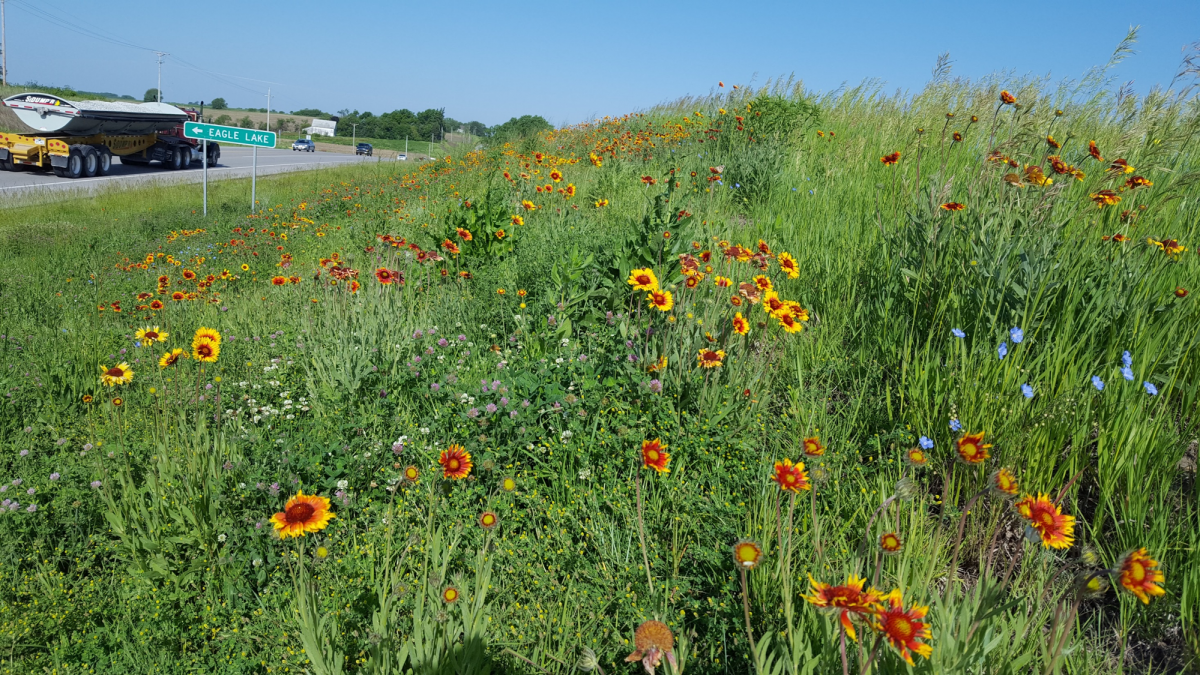
May 8, 2019
Lincoln, Neb. —The idea of a road trip across Nebraska can be appealing for a number of reasons, including the beautiful grasses and wildflowers found along roadsides throughout the state. Much of that vegetation has come from the revegetation practices of the Nebraska Department of Transportation which has teamed up with researchers from the University of Nebraska–Lincoln to evaluate these efforts.
In addition to visual aesthetics, the main reason the NDOT seeds roadsides is to establish vegetation cover and to prevent erosion, which is required by the federal government. They seed native mixtures of grasses and wildflowers. While the wildflowers look better, according to Walt Schacht, Sunkist Fiesta Bowl Professor of Agronomy, the challenge is that they don’t establish and persist as long as grasses.
“Across the state we located 10-12 sites that had been seeded at least 10 years ago to see what grasses and what wildflowers persisted,” he said.
Schacht is part of the range, forage and pastures group in the Department of Agronomy and Horticulture who conducted the study, in collaboration with Jon Soper and Carol Wienhold from the NDOT and post-doctoral research associate E.J. Raynor. What the researchers found is that neighboring land types, such as rangeland or cropland, dictate the success of roadside revegetation in providing diverse and native plant communities.
In the cropland-dominated eastern regions of Nebraska, roadsides experienced 20 - 30% less native species that established from nearby seed sources than roadsides in the rangeland-dominated Sandhills and Panhandle. Additionally, a roadside site in central Nebraska, which was surrounded by rangeland, supported almost twice as many species as a nearby cropland-surrounded roadside. Overall, the number of plant species detected at Sandhills’ roadsides as well as Panhandle locations was at least 15 species greater than roadsides in central and eastern Nebraska. This result suggests that the level of management necessary on western Nebraska roadsides is less than that on eastern locations with high exposure to non-native seed sources.
A Floristic Quality Assessment of roadsides in the northeast revealed high production of seeded native grasses, such as eastern gamagrass and switchgrass, increased the ability of revegetation efforts for restoring native-plant dominance in a region of the state highly invaded by non-native grasses, such as smooth bromegrass. Sites with low levels of the native grasses were dominated by communities of lower conservation value and high non-seeded, non-native grass composition.
“This foundational work on Nebraska roadside plant community ecology establishes that Nebraska roadsides are viewed as a resource where plant communities with a diversity of native grassland species can be established,” Schacht said. “However, the persistence of many seeded, native species is minimal because of the competitiveness of both seeded and invasive species of grass.”
A summary of the research was recently published in Environmental Management.
Contact:Walt Schacht
Sunkist Fiesta Bowl Professor of Agronomy
Department of Agronomy and Horticulture
402-472-0205
wschacht1@unl.edu